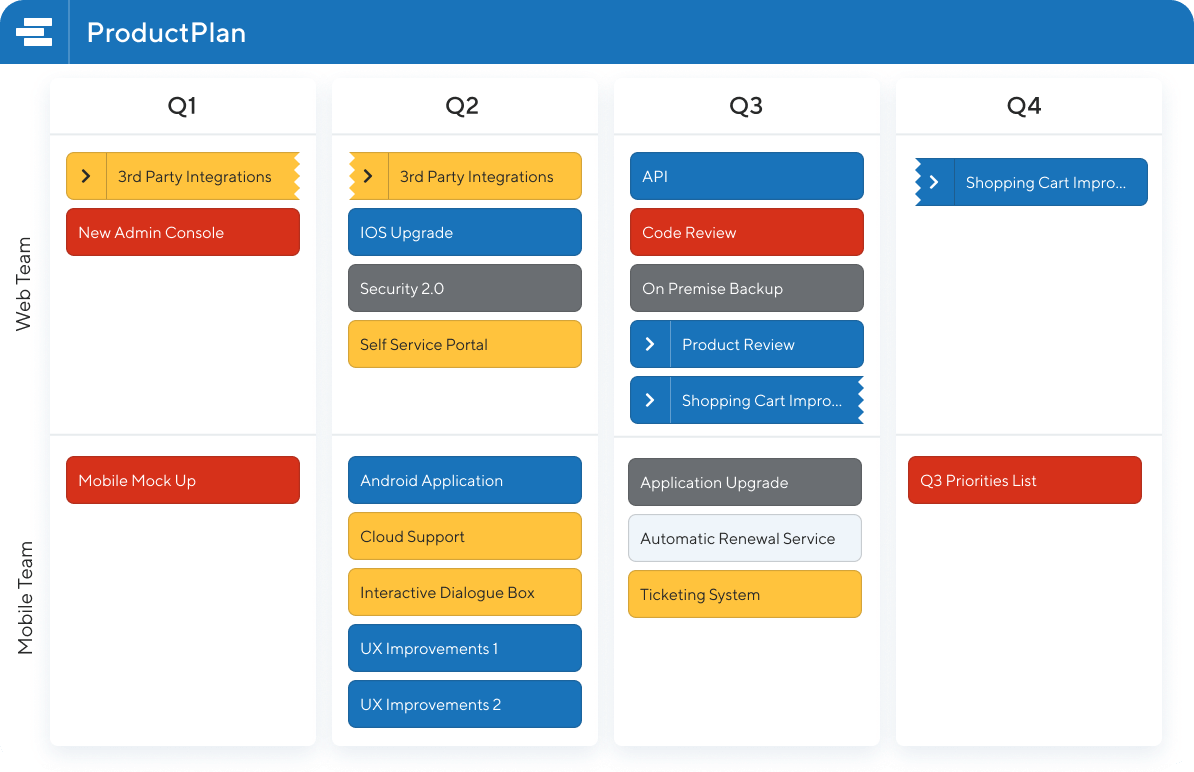Different parts of the organization need different things to prepare for launch.
Specific Cross-Departmental Engagement
Different parts of the organization need different things to prepare for launch. Carve out time with each department, pursuing a specific agenda each time. This agenda provides them with the information they need and ensures those departments will complete their deliverables on time and accurately.
You may need to set aside more time than anticipated, given that these departments are not ones that you engage with on a daily or even weekly basis. Alignment in engineering and development can often occur naturally and often because of the extreme overlap; however, this may not be the case for marketing, sales, and support.
Marketing
Every new product launch needs people outside of your internal team to:
- Be aware of the product launch.
- Understand the value the launch provides.
- When to expect the official product launch.
All those things won’t happen unless the marketing team is involved. Marketing will craft compelling messages and talking points that speak to the product’s unique value proposition. To ensure accuracy, it needs to be done in collaboration with product management.
Don’t make a mistake and put off talking with marketing until you’re ready to speak to sales. The role of marketing, particularly product marketing, comes into the product launch process much earlier. Marketing sets the stage and initiates the processes that will make the sales team successful.
Give a clear priority to marketing when you’re developing the value proposition. The team must understand users and buyer personas and how the product fits into the competitive landscape to generate compelling, on-point materials and execute successful campaigns for the new product. If they don’t have that solid foundation to build on, things can go wrong very quickly.
Product management should have the opportunity to review everything for accuracy early enough that they can catch and correct any errors. If looping in marketing happens late, though, this crucial opportunity can be taken away in the interest of shipping messaging and positioning for the sake of the launch.
Sales
Training up the sales team is essential to bring in the revenue your strategy was built to generate.
Before getting into the product itself, the sales team requires some foundational education—train sales on the product’s value proposition, benefits, and ideal customer profile. Explain how the product you designed and built offers specific benefits to a particular target audience. Set some parameters around what makes for a good prospect and realistic use cases for the product.
Without conveying this information to sales, there’s no telling whom they’ll try to sell it to and what promises they’ll make. Left to their own devices, you risk getting inundated with square peg-round hole scenarios if there isn’t a match.
Sales Collateral
Consistency across the sales team is crucial. This consistency is where assets like slide decks, collateral, and sell sheets come in. There should be a robust catalog of resources, tailorable for different target segments, and follow-up materials for each sales funnel stage. Ensure sales has the quality and comprehensive sales tools that you’ve verified for accuracy and quality.
Sales Demos
Almost every customer will want to see the product in action before buying it, which means you’ll be swamped with requests to provide customer demos. It’s not a particularly scalable solution. Train sales on the product, so they’re comfortable and knowledgeable enough to give their own demos.
Please don’t underestimate the time it takes to become enough of a product expert to demonstrate its value and confidently sell it to prospects. It’s particularly challenging if the product is breaking new ground or requires pre-existing technical acumen.
Of course, those demos and presentations will inevitably lead to questions from prospects. You’ll want to prepare sales for when things go off-script as well—arms sales with FAQs, talking points, and responses to common objections.
While some things can be anticipated ahead of the launch, others need to be added based on real-world experiences in the field.
Support
Support (or customer service or customer success) is instrumental in successfully adopting and utilizing your product. If the support team feels lost or stuck, you can bet your customers will feel even more confused. Don’t leave your dedicated support crew in the dust in your excitement to move the product along.
Your future self will thank you for thinking far enough ahead and making the support team product experts. When other departments or customers have questions, support can be the go-to, and you’ll only be called in when things require escalation.
You’ll also want to develop an escalation and feedback process for more difficult product issues (or more difficult customers). A process should be in place to document all contact your support team has with users.
Legal
It’s important to mention you should involve your legal team in your product launch. That way, they can vet all the necessary customer contracts, terms & conditions, and other legal and regulatory documentation in place. It’s better to involve them before the product launch, where there is time to make necessary adjustments than to inform them afterward where you and your product could already be under legal pressure.

